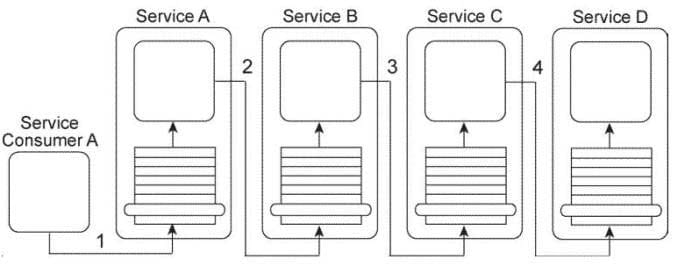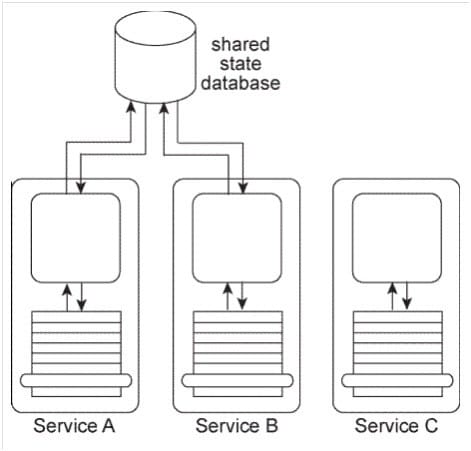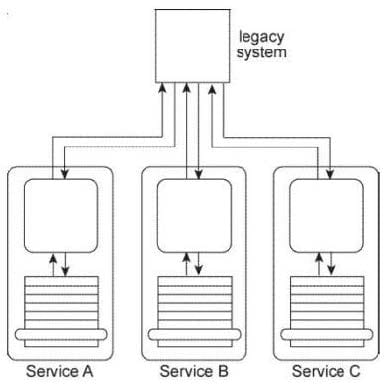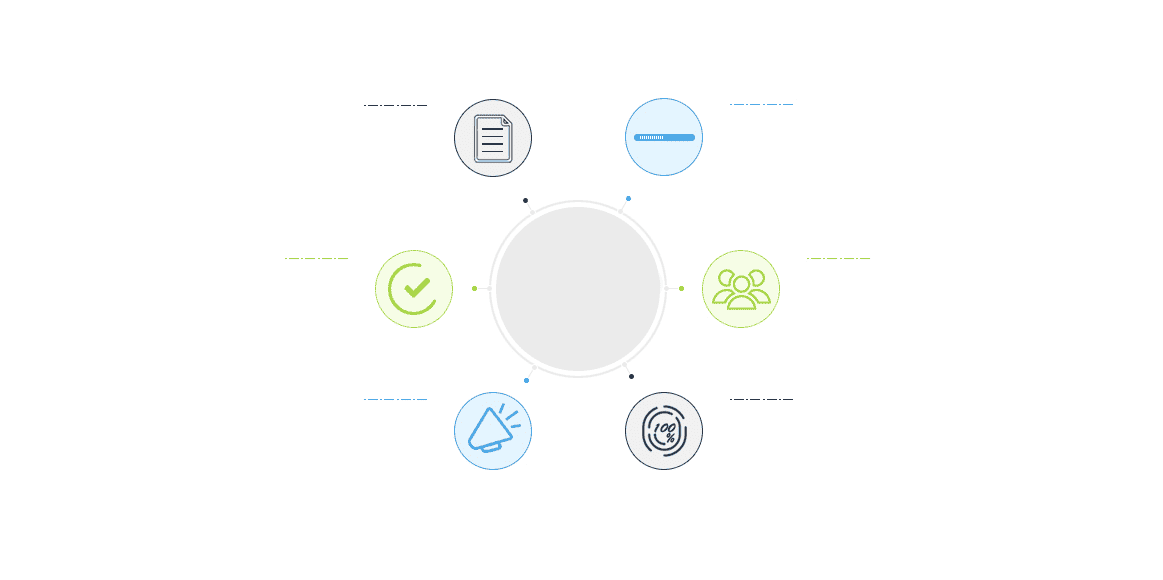SOA S90.09 Exam Dumps
Vendor: SOA
Exam Code: S90.09
Exam Name: SOA Design & Architecture Lab
Certification: Certified SOA Architect
Total Questions: 40 Q&A ( View Details)
Updated on: Mar 20, 2025
350-001 has been changed greatly by Cisco Official in May 2014. Our 350-001 product contains the latest real exam questions and answers. 100% Pass Guarantee. Please feel free to purchase.
- 99.5% pass rate
- 12 Years experience
- 7000+ IT Exam Q&As
- 70000+ satisfied customers
- 365 days Free Update
- 3 days of preparation before your test
- 100% Safe shopping experience
- 24/7 Support
SOA S90.09 Last Month Results
Free S90.09 Exam Questions in PDF Format
- File
- Size
- SOA_leads4pass_S90.09_by_Morgan_37.pdf
- 302.18 KB
- SOA_leads4pass_S90.09_by_Raymand_35.pdf
- 325.3 KB
- SOA_leads4pass_S90.09_by_StorageGuy_38.pdf
- 280.84 KB
- SOA_leads4pass_S90.09_by_kenobi_33.pdf
- 299.13 KB
- SOA_leads4pass_S90.09_by_ahmed_medhat_33.pdf
- 323.29 KB
- SOA_leads4pass_S90.09_by_Russel_Margolis_39.pdf
- 319.69 KB
S90.09 Online Practice Questions and Answers
Service Consumer A sends a message to Service A (1), which then forwards the message to Service B (2). Service B forwards the message to Service C (3), which finally forwards the message to Service D (4).
Services A, B, and C each contain logic that reads the content of the message and, based on this content, determines which service to forward the message to. As a result, what is shown in the Figure is one of several possible runtime scenarios.

You are told that the current service composition architecture is having performance problems because of two specific reasons. First, too many services need to be explicitly invoked in order for the message to arrive at its destination. Secondly, because each of the intermediary services is required to read the entire message contents in order to determine where to forward the message to, it is taking too long for the overall task to complete. What steps can be taken to solve these problems without sacrificing any of the functionality that currently exists?
A. The Intermediate Routing pattern can be applied together with the Service Agent pattern in order to establish a set of service agents capable of intercepting and forwarding the message based on predefined routing logic. To avoid the need for service agents to read the entire message contents, the Messaging Metadata pattern can be applied so that content relevant to the routing logic is placed in the header of a message. This way, only the message header content needs to be read by the service agents.
B. The Intermediate Routing pattern can be applied together with the Service Agent pattern in order to establish a set of service agents capable of intercepting and forwarding the message based on predefined routing logic. To avoid the need for service agents to read the entire message contents, the Rules Centralization pattern can be applied so that content relevant to the routing logic is isolated into a separate Rules service. This way, service agents are only required to access the Rules service in order to determine where to forward messages to. The Standardized Service Contract principle will need to be applied to ensure that the new Rules service and the new service agents provide service contracts that are compliant to existing design standards.
C. The Intermediate Routing pattern can be applied together with the Service Agent pattern in order to establish a set of service agents capable of intercepting and forwarding the message based on predefined routing logic. The Service Discoverability principle can be applied to improve the communications quality of message contents, which will reduce the time required by service agents to
read the message contents at runtime.
D. None of the above.
Services A, B, and C are non-agnostic task services. Service A and Service B use the same shared state database to defer their state data at runtime.
An assessment of these three services reveals that each contains some agnostic logic, but because it is bundled together with the non-agnostic logic, the agnostic logic cannot be made available for reuse.
The assessment also determines that because Service A and Service B and the shared state database are each located in physically separate environments, the remote communication required for Service A and Service B to interact with the shared state database is causing an unreasonable decrease in runtime performance.

How can the application of the Orchestration pattern improve this architecture?
A. The application of the Orchestration pattern will result in an environment whereby the State Repository and Service Data Replication patterns are naturally applied, allowing the shared state database to be replicated for Services A and B so that each task service can have its own dedicated state database. The Process Centralization pattern can also be applied to Services A and B, so that their logic is physically centralized, turning them into orchestrated task services.
B. The application of the Orchestration pattern will result in an environment whereby the Process Abstraction and Process Centralization patterns are naturally applied to Services A, B, and C, resulting in a clean separation of non-agnostic task services from newly designed agnostic services with reuse potential. Also, the State Repository pattern can be applied by the availability of a central state database that can be shared by Services A and
C. This database can be made available as a local part of the environment so that Services A and B can avoid remote communication.
D. The application of the Orchestration pattern will result in an environment whereby the Compensating Service Transaction is naturally applied, resulting in the opportunity to create sophisticated exception logic that can be used to compensate for the performance problems caused by Services A and B having to remotely access the state database. The Process Abstraction and Service Broker patterns are also naturally applied, enabling the separation of non-agnostic logic and agnostic logic while providing common transformation functions required to overcome any disparity in the service contracts that will need to be created for the new agnostic services.
E. None of the above.
Service A. Service B. and Service C are each designed to access the same shared legacy system. The service contracts for Service A, Service B, and Service C are standardized and decoupled from the underlying service logic. Service A and Service B are agnostic services that are frequently reused by different service compositions. Service C is a non- agnostic task service that requires access to the legacy system in order to retrieve business rules required for the service to make runtime decisions that determine its service composition logic. The legacy system uses a proprietary file format that Services A, B, and C need to convert to and from.

You are told that additional services need to be created, all of which need access to the legacy system. You are also told that the legacy system may be replaced in the near future. What steps can be taken to ensure that the replacement of the legacy system has a minimal impact on Services A, B, and C and any future services that are designed to rely upon it?
A. The Legacy Wrapper pattern can be applied together with the Standardized Service Contract principle to position a standardized service contract between the legacy system and any services that require access to it. This effectively establishes a new utility service dedicated to the encapsulation of the legacy system. When the legacy system is replaced, the utility service can keep its standardized service contract. To build the utility service, the Data Format Transformation pattern is applied to convert between the proprietary legacy system file format and the XML format used in the standardized service contract.
B. The Legacy Wrapper pattern can be applied together with the Official Endpoint pattern so that the Service A service contract is positioned as the sole access point for the legacy system. The Data Format Transformation pattern is applied to enable the conversion between the proprietary legacy system file format and the XML format used in the Service A service contract. Finally, the Contract Centralization pattern is applied so that Service A is forced to only access the legacy system via its
published standardized service contract.
C. The Legacy Wrapper pattern can be applied together with the Data Format Transformation pattern and the Standardized Service Contract principle in order to establish an intermediate layer of standardized transformation logic that is positioned between the legacy system and Services A, B, and C. This way, if the legacy system is replaced, the services will not be affected because of the abstraction established by the standardized transformation layer.
D. None of the above.
Hot Exams
Related SOA Certifications
Why S90.09 Dumps Are Worth It
Hannah Johnson
Leads4Pass is one of the best websites I have ever used. It only took me 3 days of preparation to complete my goal plan. Not only that, I was successful with high scores.
Joel C
It was the 16th when I purchased the Leads4Pass materials. They updated the materials on the 18th. When I asked them to send me the latest materials, they quickly sent me the latest ones. The new materials included several of the latest core question types. Finally, I succeeded. Six of the new core questions were completely matched. Thank you!
Martha W
I have used free materials, the privacy is poor, the public content matching rate is too low,I gave up on them because they failed me once. Leads4Pass was recommended by a friend. Both the privacy protection and the preciousness of the materials are very high. By the way, I won this time.
David Frazier
There is nothing more satisfying than success! Their question types are very similar, and they were very helpful to my progress in answering questions during the exam. Thank you.
Dolores N
I need to take multiple certification exams for my organization. There are so many certification exams that I can't help but choose supporting materials. I have tried multiple platforms with some success and failure. In the end, I chose Leads4Pass. It was instant for me. Effective materials are where the real value lies.
Helen Kovac
I was despised by a close friend until he failed twice and I passed once and then he changed his mind. He shared his failure experience with me. He told me that he had been learning through books and looking for free materials. These outdated contents could not really help him. Later I recommended him Leads4Passs and he also succeeded.
Raymond I
I was lucky enough to choose Leads4Pass for the first time. I used their VCE tool to learn, and it was really easy and efficient. I think what’s really amazing is that they can ensure that all materials are industry-leading, which is really amazing.
Leads4Pass Certified SOA Architect S90.09 Exam Analysis
The following table comprehensively analyzes the quality and value of Certified SOA Architect S90.09 exam materials.

100% safe shopping
100% real and effective
100% money back guarantee
Leads4Pass guarantee comes from more than 10 years of experience and reputation

 Printable PDF
Printable PDF